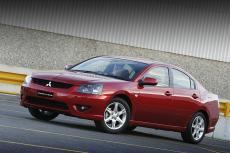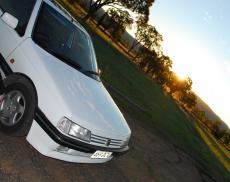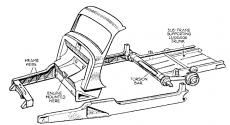This is my last blog post for this year: new posts and AutoSpeed articles will both resume January 8.
So what have we got planned for 2008?
Firstly, the new editorial approach that we’ve taken in the last 12 months or so will be strengthened and consolidated. In short, that’s a move that is in keeping with the rapidly changing times.
Consider these points:
• Countries are now seeking to isolate themselves from the volatile politics of world oil by embracing alternative automotive fuels like ethanol, CNG and LPG. Sovereign energy self-sufficiency is of greater political and strategic importance now that at any time since World War II.
• The increasingly solid evidence being presented by scientists for global warming is making a huge impact not only at the ballot box but also in big company boardrooms around the world. Decreasing energy consumption – and so fossil-fuelled CO2 emissions – is likely to become the watchword for all human activities, including transport.
• Tightening legal restrictions on driving fun are already all around us. Having a modified road car with enormous power is becoming an increasingly silly aim, suitable only for dyno boasting competitions. On the other hand, having a frugal, responsive, good handling and technically advanced car is as rewarding as it has ever been.
• The car manufacturing industry is in its time of greatest philosophical change since the 1930s. Hybrid petrol-electric cars are now being actively developed and/or marketed by every major car company in the world. That represents an incredible change in just the last 5 years. With the legislated clean-up that’s now also occurring with diesel engine emissions, it’s quite easy to envisage a situation where, world-wide, traditional petrol engine cars will be in the minority of new cars.
In the context of these points, to keep on running articles about 350kW supercharged V8 modified road cars and the like is not only short-sighted, it does you all a disservice.
(On a personal level, this is an almost exact re-run of what was happening when I first started automotive journalism. Then, about 15 years ago, engine management was being introduced on all new cars. And, with that development, oh boy, was the automotive world ever changing! But at the time, nearly every modified car magazine continued writing about engines with carbies and points. It took years before the modified car media embraced the changing technology. But anyone with half a brain could have seen the writing was on the wall for the old technology, and that encouraging readers to stick with outdated ideas was doing them no favours.)
So for AutoSpeed, huge, thirsty and enormously powerful modified engines are out – we won’t be covering them.
But articles on techniques that improve car and engine efficiency – aerodynamics, turbocharging, intercooling, intakes, exhausts, headwork, tyres, suspension and brakes – are right on the money. Especially if those techniques are talked about in the context of cars that are already highly efficient….
We’re also really excited about another development for the coming year. Why? Well, we’re going to be presenting stories on a whole bunch of new electronic modules dedicated to do-it-yourself car modification.
Long-time readers will be familiar with the electronic kits developed by me in conjunction with Silicon Chip magazine and sold by Jaycar Electronics, but the new modules will be better again. So how will they be better? In short:
• They won’t be kits but instead be fully built and tested circuit boards, ready to be connected and then put in a box or simply wrapped in heat-shrink and placed up under the dash.
• They will be able to directly drive big electrical loads like fuel pumps, solenoids, radiator fans and the like. Or, if required, they will be able to operate relays or switch LEDs or warning lights or buzzers.
• Taking into account their high functionality and fully built status, they’ll be very cheap.
• They’ll be small, near-impossible to kill and be very simple to wire into place and set up.
The brain behind the electronics is eLabtronics, the company with which we developed the Intelligent Intercooler Water Spray Controller some 8 years ago. That product, still available, combines intercooler temperature and engine load sensing with a predictive ability that allows the intercooler spray to actually come on before it is even needed!
This time we approached eLabtronics with a proposition that they’ve very happily taken up – to build a single electronics module that can be software developed to have a myriad of different functions. By standardising the hardware, eLabtronics can make the product in greater numbers, bringing down prices. And by using software reprogramming to produce different modules, the designs can still be fully optimised for their particular functions.
We doubt that there will be any kind of modified car anywhere that can’t make good use of one (or more) of these planned modules.
And finally, in 2008 we’ll be making some major changes to the website. We’ll be introducing much greater facility for reader interaction (including with other readers); opening-up AutoSpeed to easy access by far more people; enabling easier content searching and linking; adding some more features and generally streamlining the site for better use by you.
As we’re fast heading for our tenth anniversary, I want AutoSpeed to keep being innovative, occasionally provocative, relevant and useful.
 Yesterday Ford took the wraps off the new FG Falcon.
Yesterday Ford took the wraps off the new FG Falcon. Immediately after the report on the Falcon finished, the Nine news moved straight to a segment on the booming sales of the hybrid Toyota Prius, and the way in which some individuals are now converting their cars to battery electric power. The station interviewed several Sydney electric car enthusiasts and presented a glowing report on the cars. Phrases like ‘fuel economy’, ‘greenhouse gas emissions’ ‘oil consumption’ and ‘cost to run’ sprinkled the report.
Immediately after the report on the Falcon finished, the Nine news moved straight to a segment on the booming sales of the hybrid Toyota Prius, and the way in which some individuals are now converting their cars to battery electric power. The station interviewed several Sydney electric car enthusiasts and presented a glowing report on the cars. Phrases like ‘fuel economy’, ‘greenhouse gas emissions’ ‘oil consumption’ and ‘cost to run’ sprinkled the report.
 Julian Edgar, 50, has been writing about car modification and automotive technology for nearly 25 years. He has owned cars with two, three, four, five, six and eight cylinders; single turbo, twin turbo, supercharged, diesel and hybrid electric drivelines. He lists his transport interests as turbocharging, aerodynamics, suspension design and human-powered vehicles.
Julian Edgar, 50, has been writing about car modification and automotive technology for nearly 25 years. He has owned cars with two, three, four, five, six and eight cylinders; single turbo, twin turbo, supercharged, diesel and hybrid electric drivelines. He lists his transport interests as turbocharging, aerodynamics, suspension design and human-powered vehicles.











